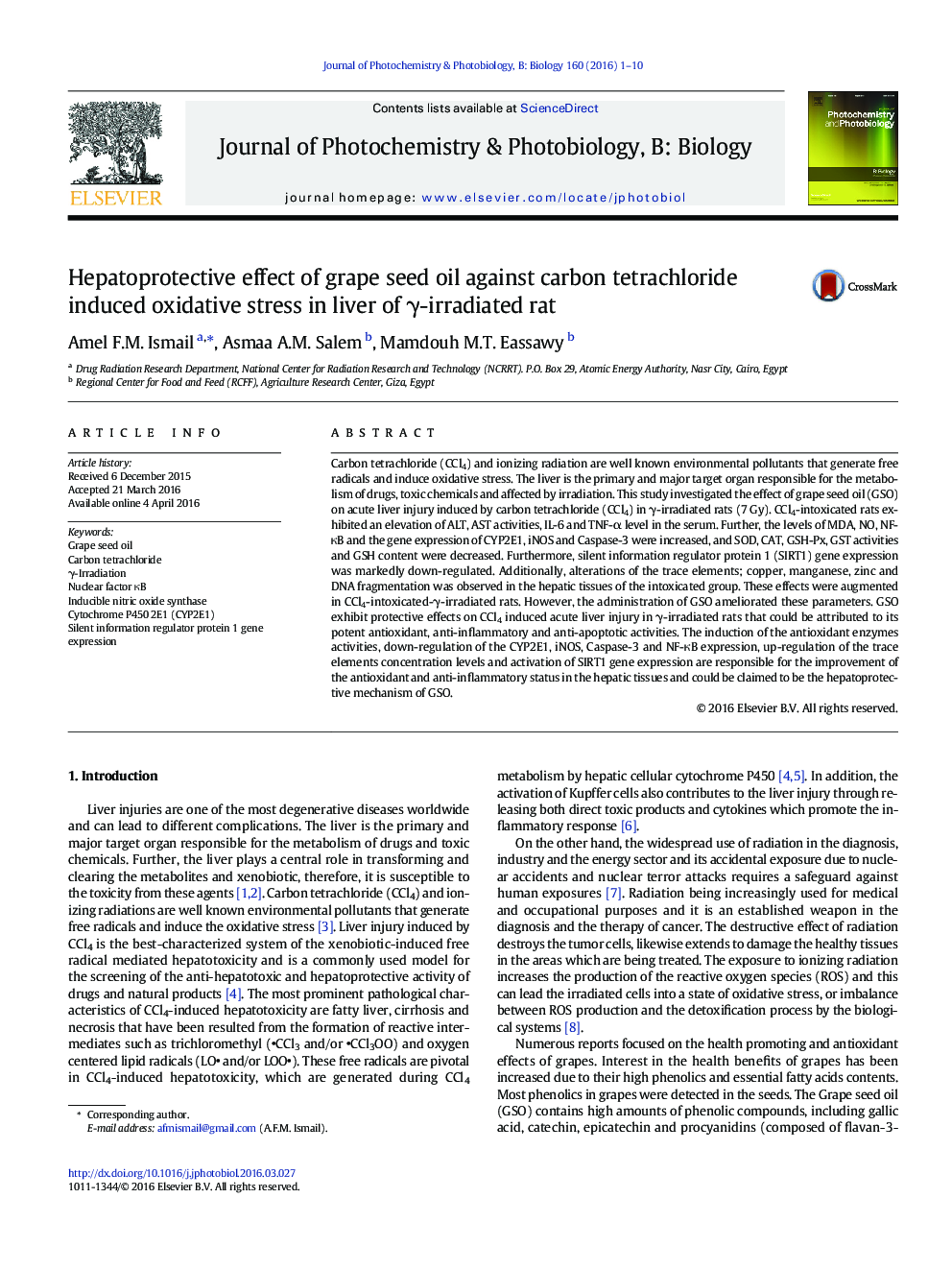| کد مقاله | کد نشریه | سال انتشار | مقاله انگلیسی | نسخه تمام متن |
|---|---|---|---|---|
| 29558 | 44422 | 2016 | 10 صفحه PDF | دانلود رایگان |
• The protective role of grape seed oil on CCl4 induced liver injury in γ-irradiated rat was studied.
• Grape seed oil (GSO) exerts significant amelioration of antioxidant and antiinflammatory status.
• GSO ameliorated CYP2E1, iNOS, NF-κB, TNF-α, and IL-6 levels.
• GSO exhibits activation of SIRT1 gene expression.
• GSO had a hepatoprotective effect against CCl4-induced acute liver injury in γ-irradiated rats.
Carbon tetrachloride (CCl4) and ionizing radiation are well known environmental pollutants that generate free radicals and induce oxidative stress. The liver is the primary and major target organ responsible for the metabolism of drugs, toxic chemicals and affected by irradiation. This study investigated the effect of grape seed oil (GSO) on acute liver injury induced by carbon tetrachloride (CCl4) in γ-irradiated rats (7 Gy). CCl4-intoxicated rats exhibited an elevation of ALT, AST activities, IL-6 and TNF-α level in the serum. Further, the levels of MDA, NO, NF-κB and the gene expression of CYP2E1, iNOS and Caspase-3 were increased, and SOD, CAT, GSH-Px, GST activities and GSH content were decreased. Furthermore, silent information regulator protein 1 (SIRT1) gene expression was markedly down-regulated. Additionally, alterations of the trace elements; copper, manganese, zinc and DNA fragmentation was observed in the hepatic tissues of the intoxicated group. These effects were augmented in CCl4-intoxicated-γ-irradiated rats. However, the administration of GSO ameliorated these parameters. GSO exhibit protective effects on CCl4 induced acute liver injury in γ-irradiated rats that could be attributed to its potent antioxidant, anti-inflammatory and anti-apoptotic activities. The induction of the antioxidant enzymes activities, down-regulation of the CYP2E1, iNOS, Caspase-3 and NF-κB expression, up-regulation of the trace elements concentration levels and activation of SIRT1 gene expression are responsible for the improvement of the antioxidant and anti-inflammatory status in the hepatic tissues and could be claimed to be the hepatoprotective mechanism of GSO.
Journal: Journal of Photochemistry and Photobiology B: Biology - Volume 160, July 2016, Pages 1–10
